Good afternoon mushroom hunter friends, warm greetings to all of you, have a good rest, have a good activity and have a good weekend, whatever you are doing now.
Yes, okay, today of course we are back together again making a post about mushroom plants this Friday. Of course I have also prepared it in writing this post. In this moment or on this occasion I am very happy to still be able to participate in the #fungifriday community organized by @ewkaw as the host or provider of this great place.
And here are some pictures of mushrooms that I present here for all of you, this time I found a type of red ear mushroom:
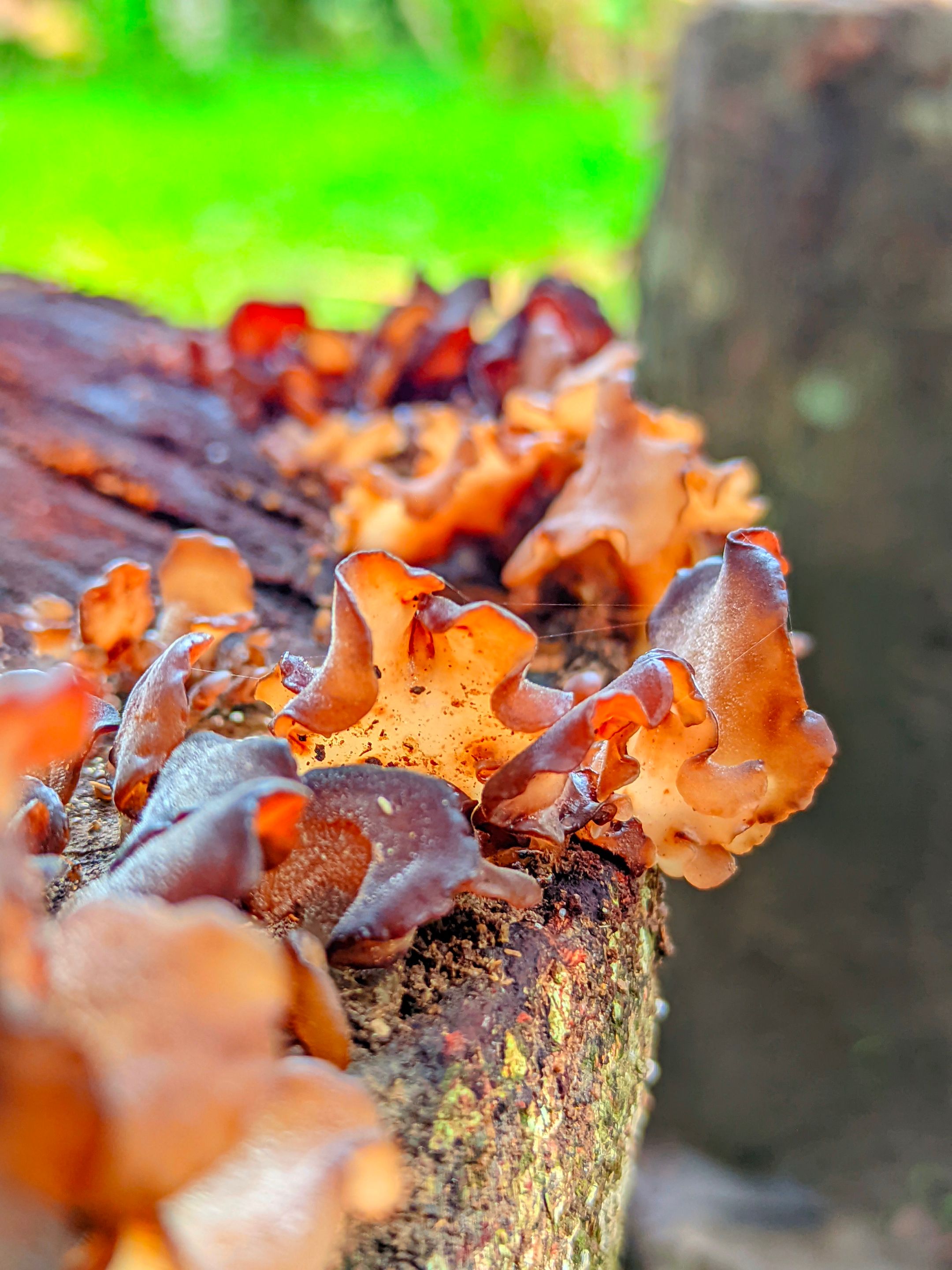
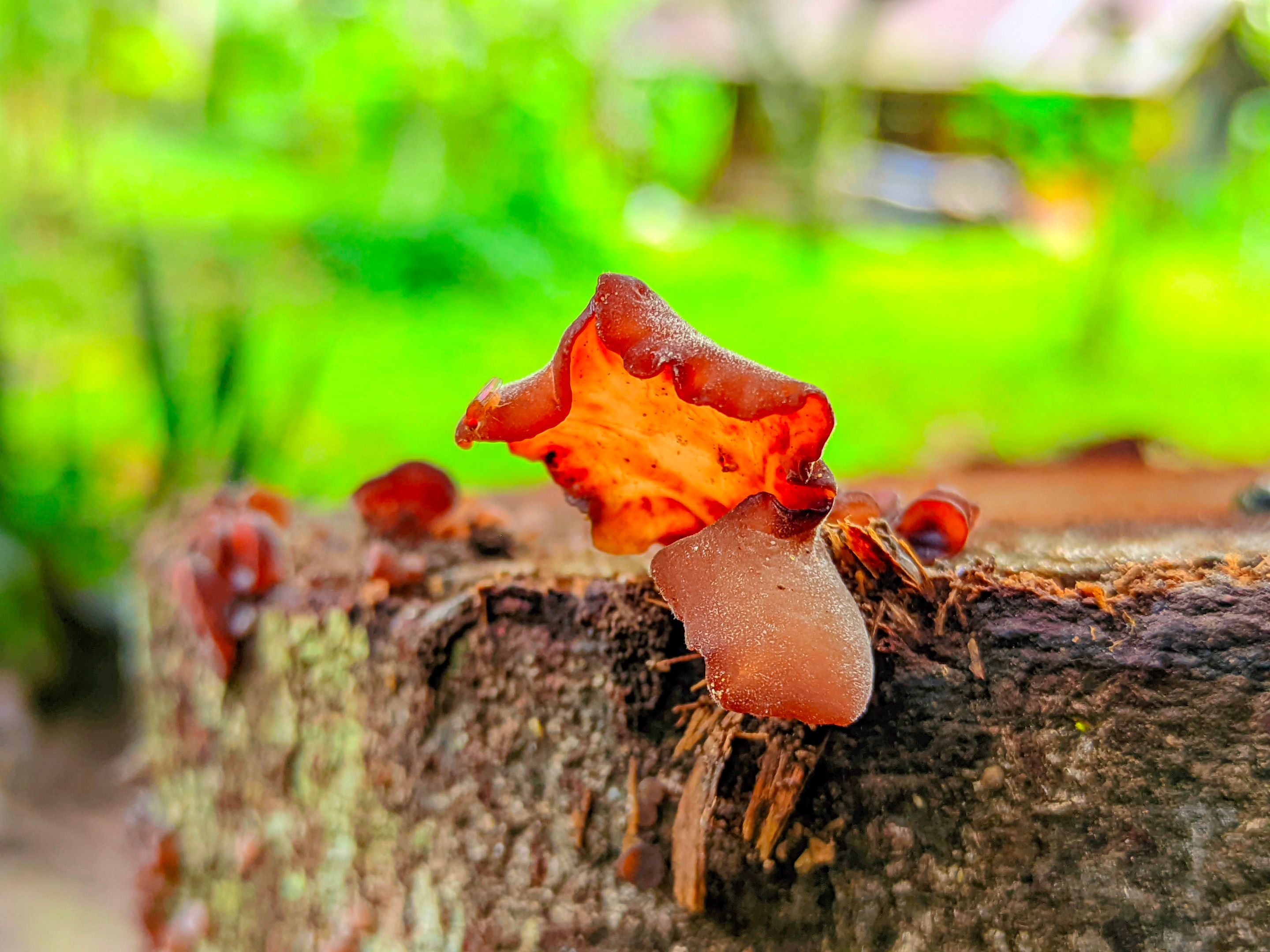

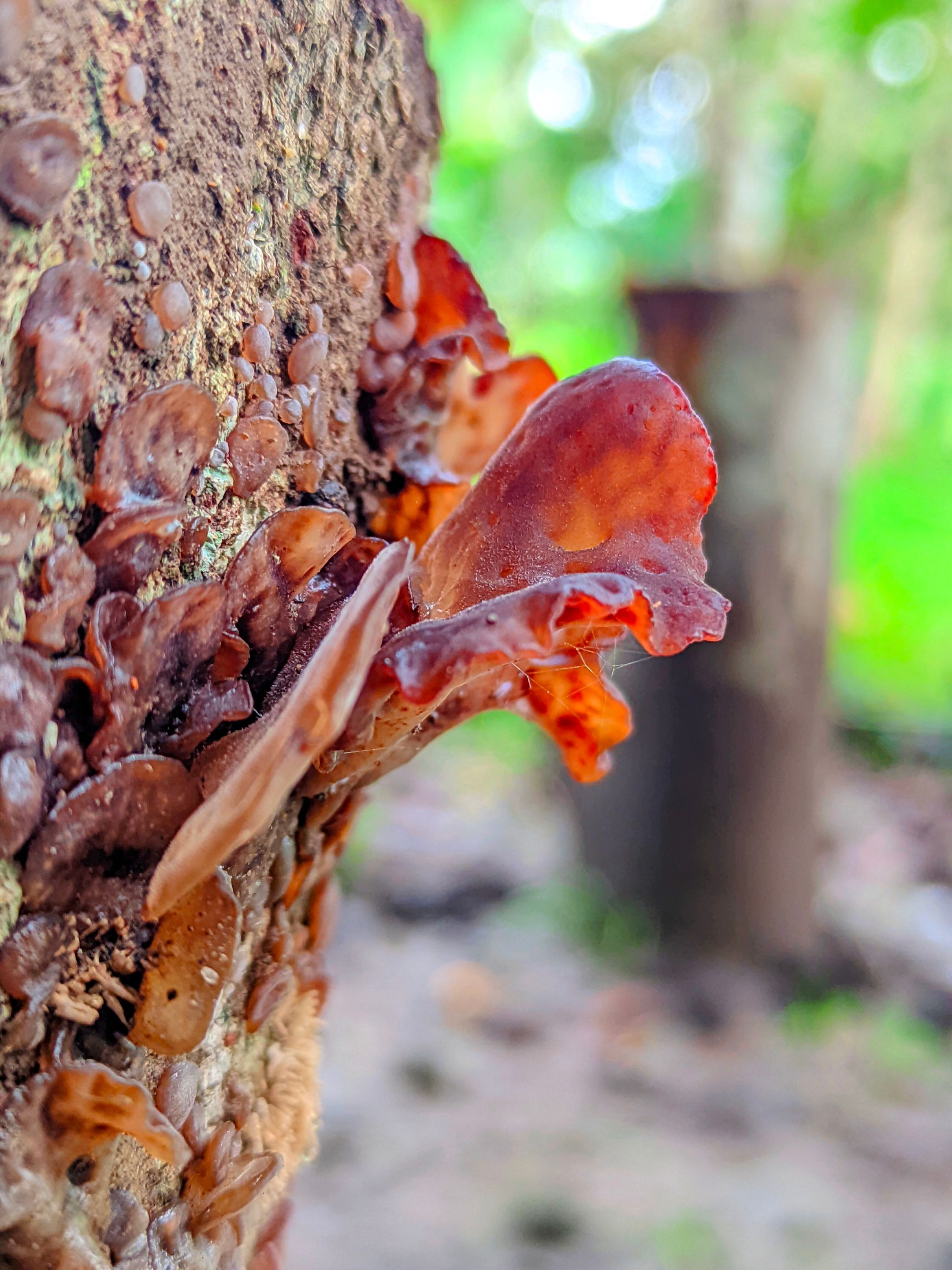
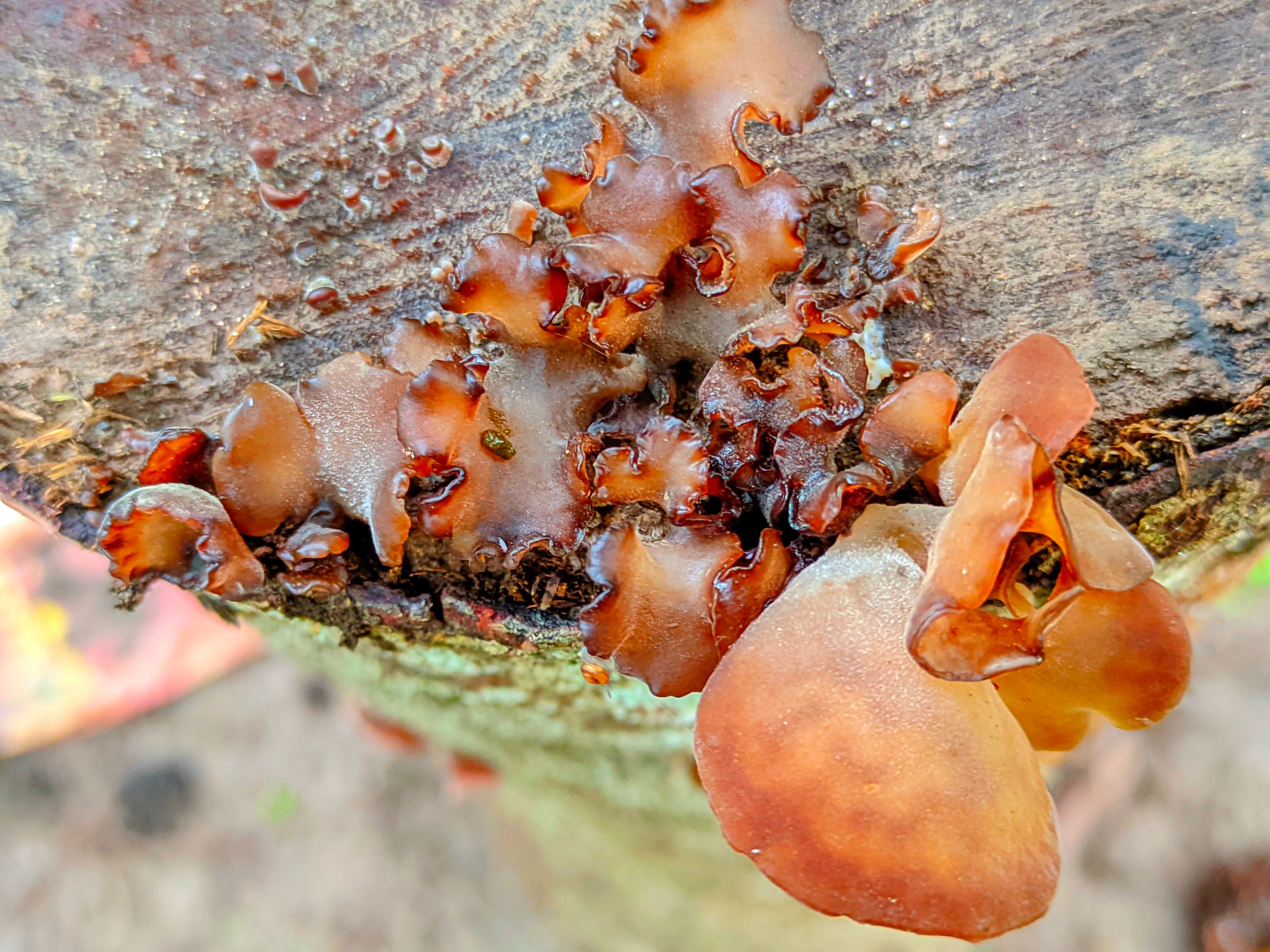
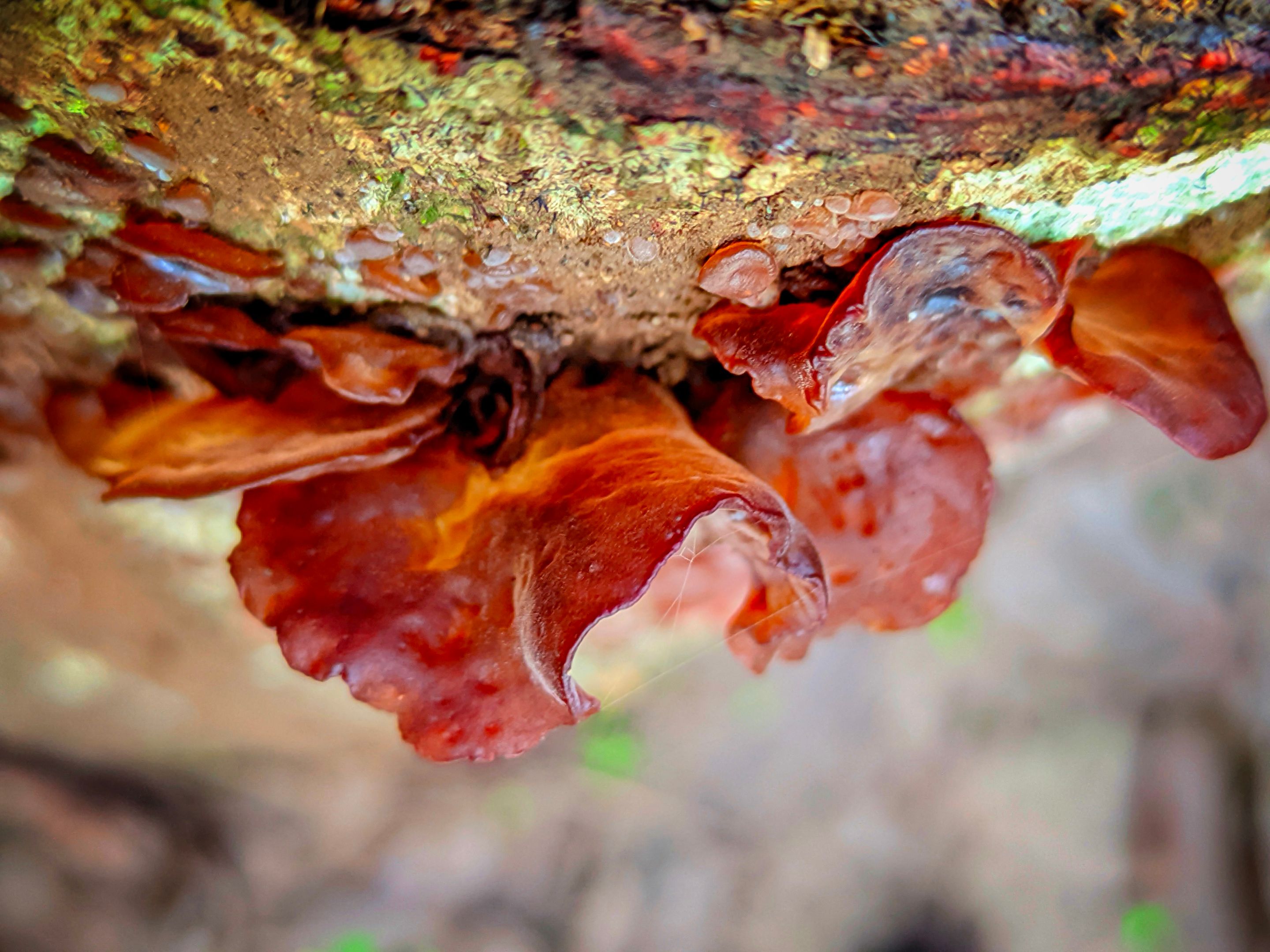
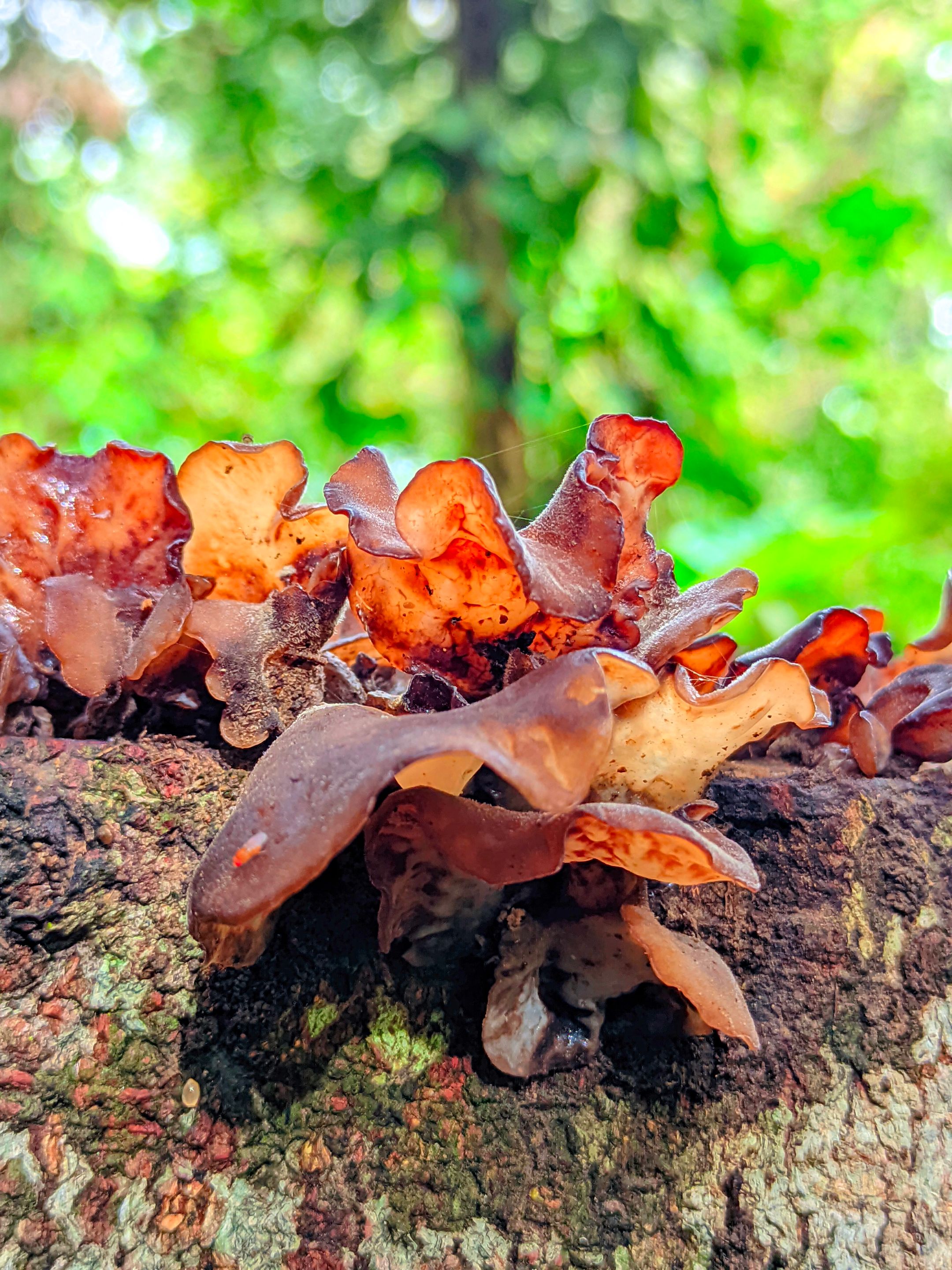
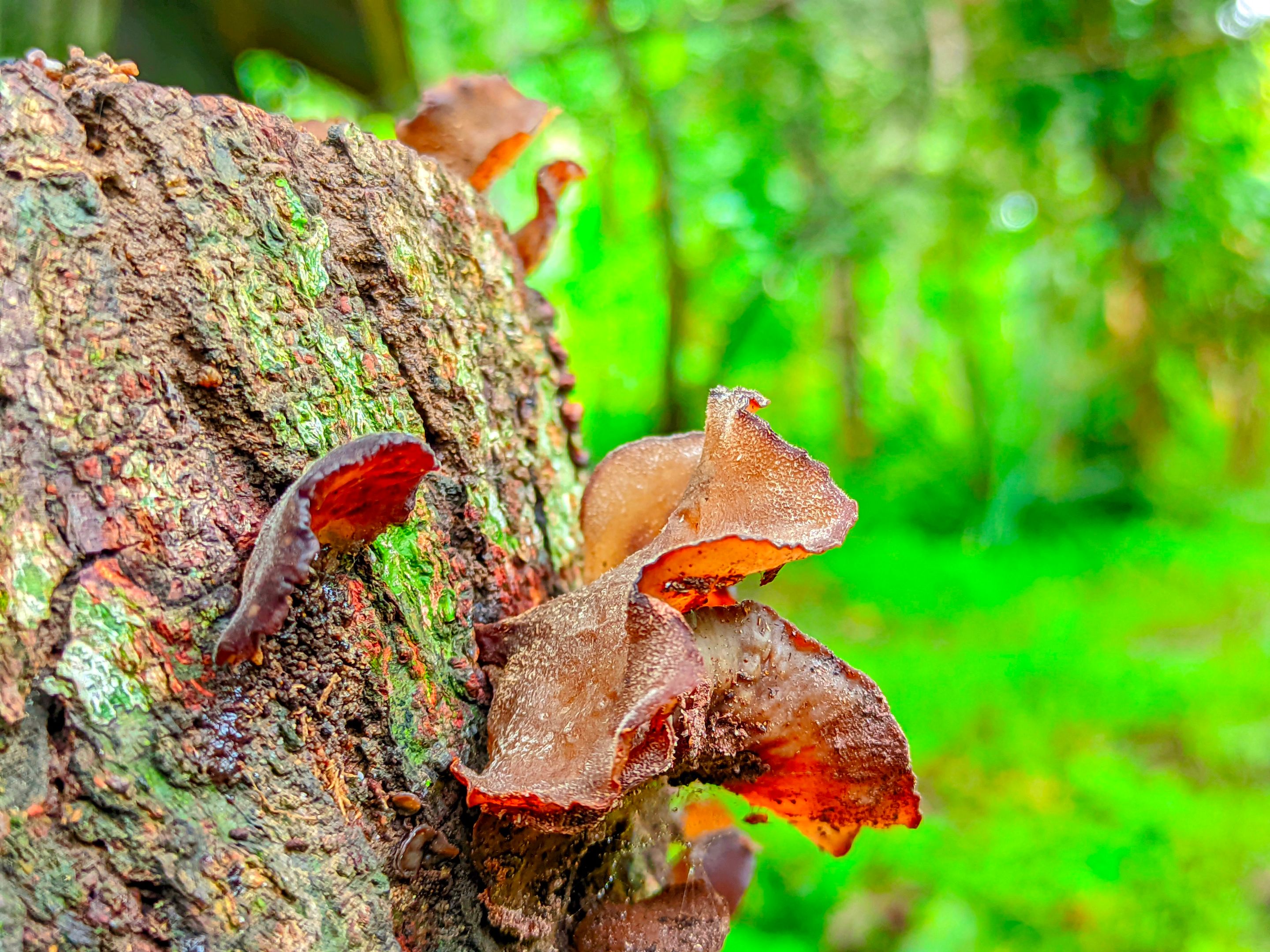
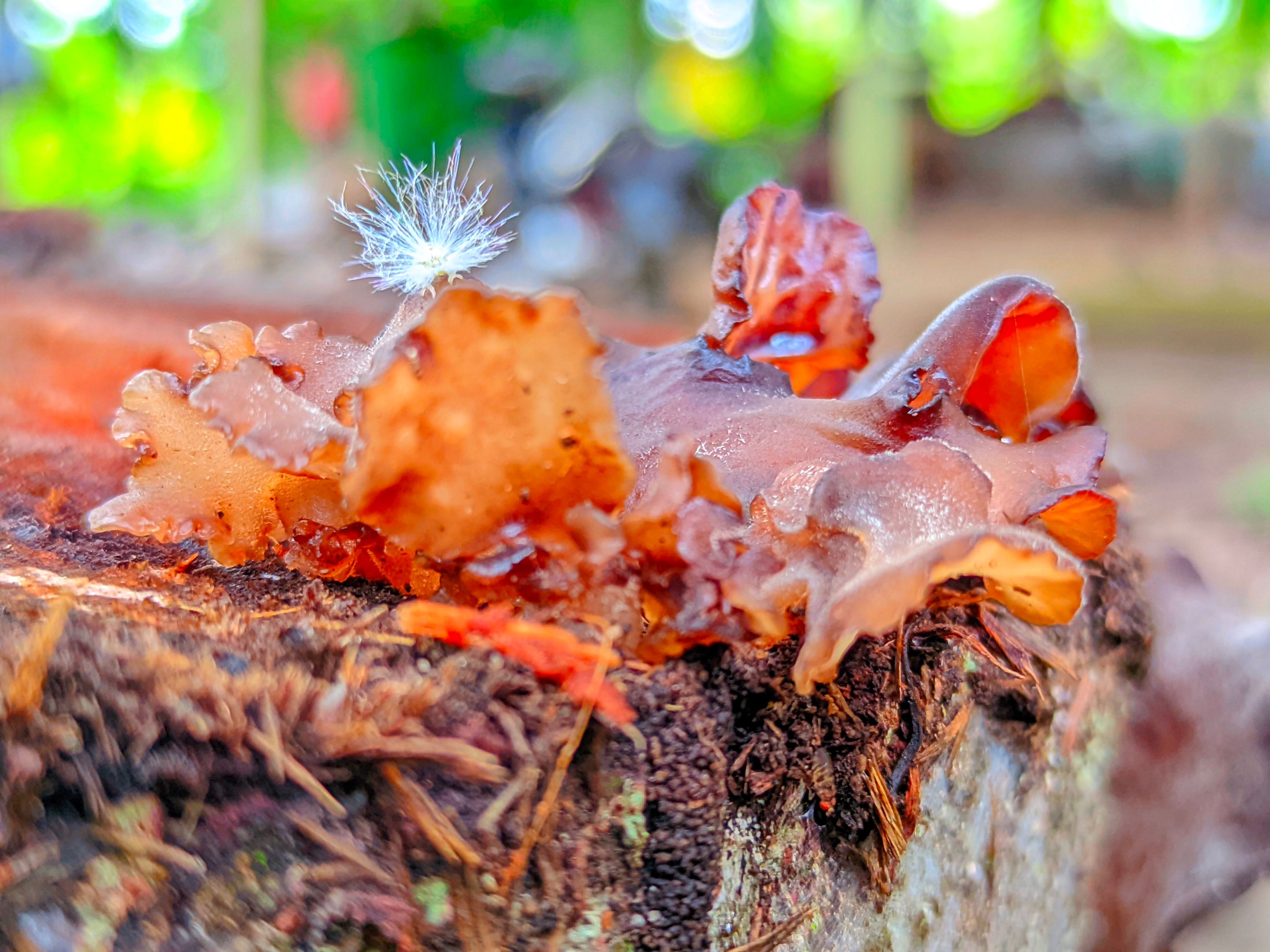
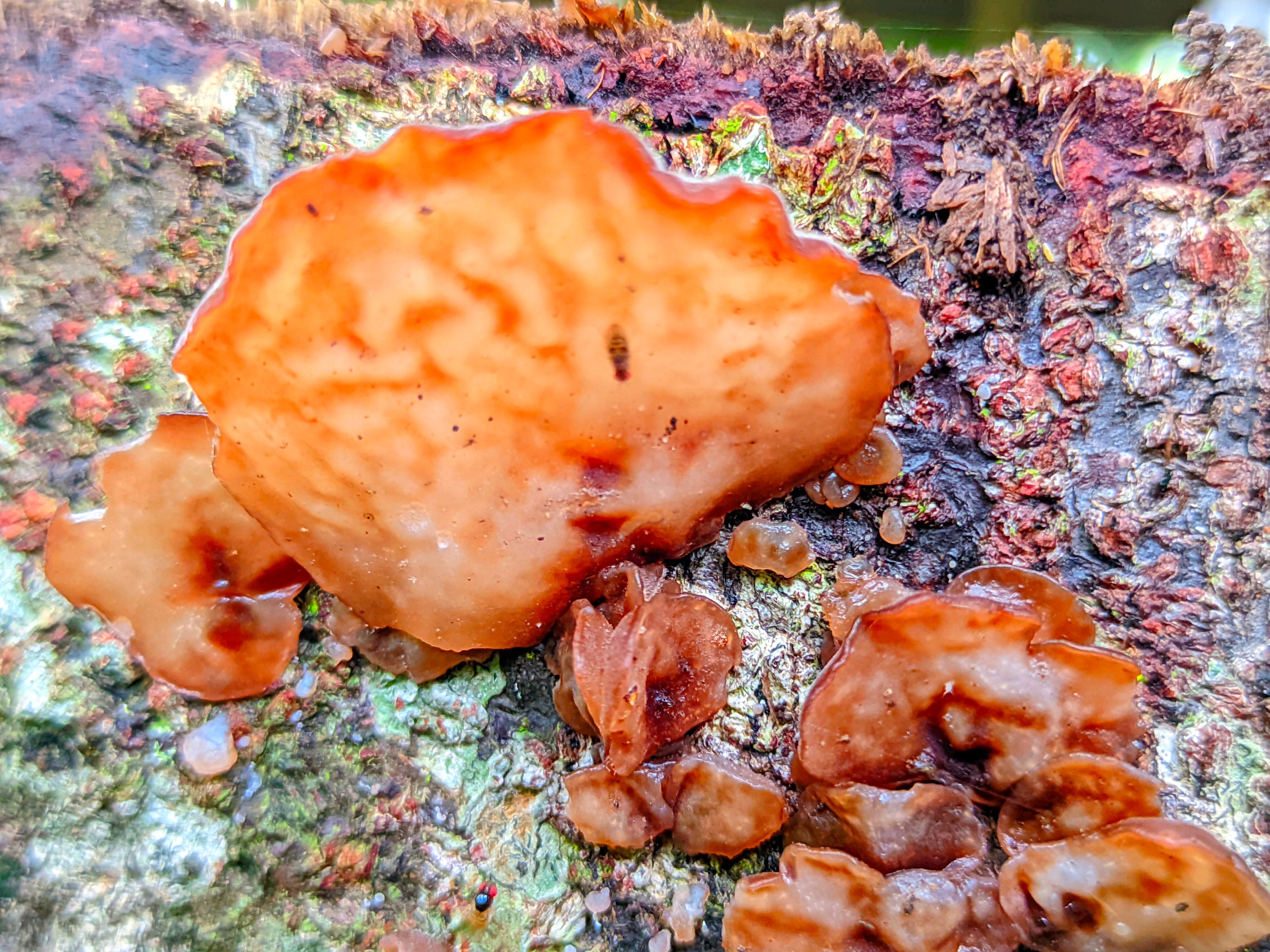
Red ear fungus (Auricularia auricula-judae, synonyms Auricularia auricula, Hirneola auricula-judae) is a species from the class Heterobasidiomycetes (jelly fungi) with a dark reddish brown fruit body and a shape very similar to a human earlobe.
The fruit body has a rubbery texture and in the wild grows on wet and damp dead tree trunks.
Kingdom: Fungi
Division: Basidiomycota
Class: Homobasidiomycetes
Order: Auriculariales
Family: Auricularaceae
Genus: Auricularia
Species: A. auricula-judae
The characteristic of this ear fungus is that it has a chewy fruit body (similar to gelatin) when fresh. However, when dry, the fruiting body of this ear fungus will become hard like bone. The fruiting body of wood ear fungus is shaped like a bowl or sometimes with lobes like ears, has a diameter of 2–15 cm, is thin, fleshy and chewy.
The color of the fruit body of this mushroom is generally black or blackish brown, but some are dark brown.
The type of ear fungus that has the highest business value is the one that has a brown color on the top of the fruit body and black on the bottom of the fruit body, and the size of the fruit body is small.
source:
[https://id.m.wikipedia.org/wiki/Jamur_kuping]
So friends, that's what I can share on this occasion and I would also like to thank all of you who have read and visited my post.
And I also apologize if there are errors in writing words or sentences because I used Google Translate to be able to make this article in English.
Regards. And see you in the next post.
This is my contribution to the #FungiFriday challenge by @ewkaw